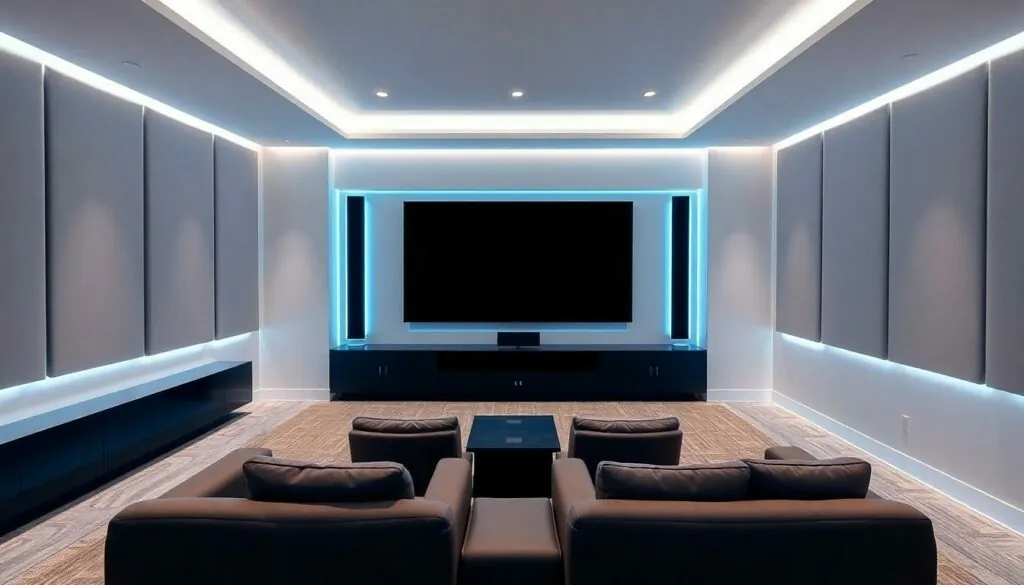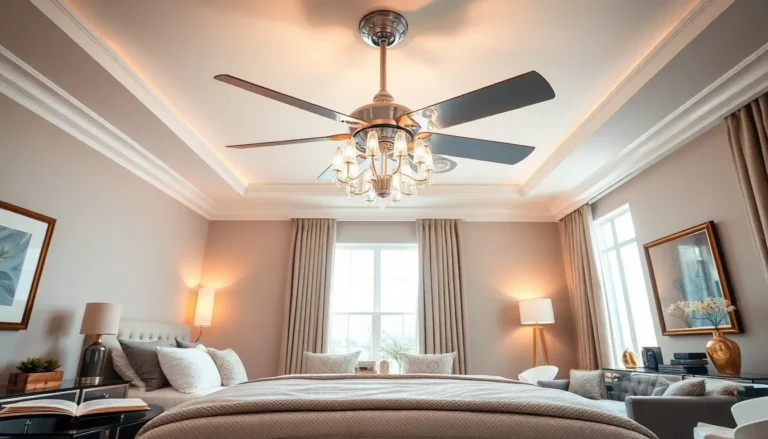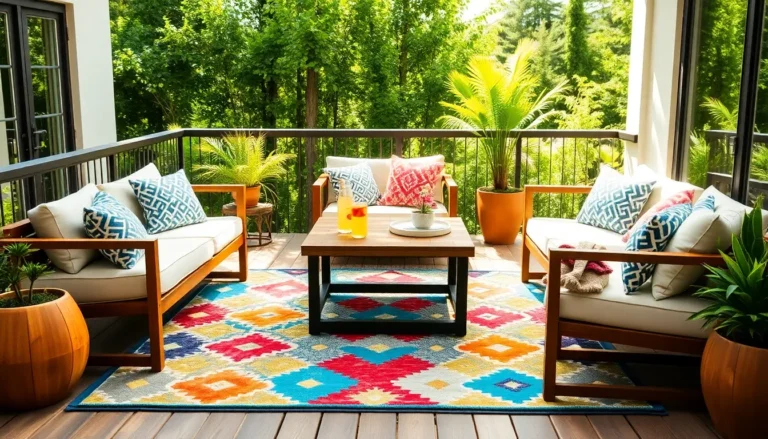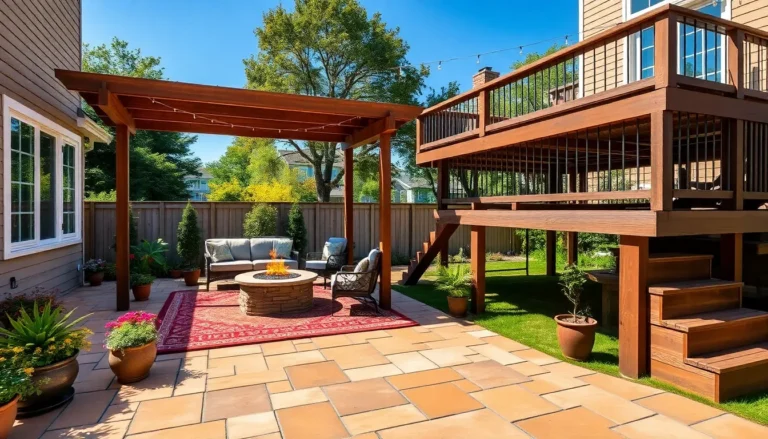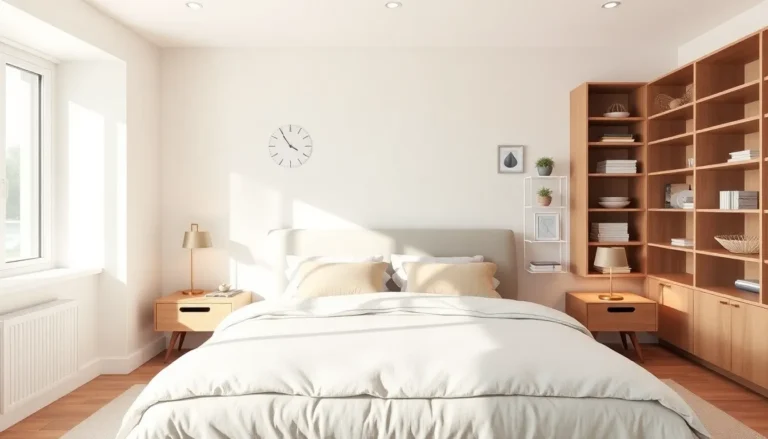Table of Contents
ToggleImagine transforming your living room into a cinematic paradise where popcorn flows like water and the sofa becomes a throne of comfort. Home theater design isn’t just about slapping up a big screen; it’s about creating an immersive experience that makes every movie night feel like an Oscar-worthy event.
Essential Elements of Home Theater Design
Creating an exceptional home theater involves several key elements that enhance the viewing experience. Prioritizing the right components ensures an immersive environment for entertainment.
Audio and Visual Equipment
Selecting high-quality audio and visual equipment establishes a solid foundation for any home theater. Begin with a large screen that fits the space, considering options like LED or OLED televisions. Surround sound systems elevate audio quality, allowing for rich soundscapes. Incorporating components like soundbars or subwoofers enhances immersion, making action scenes more thrilling. Opt for projectors for a cinematic effect when space allows. Ensure compatibility with streaming devices and Blu-ray players to access various content seamlessly.
Seating Arrangements
Comfortable seating arrangements play a crucial role in a home theater. Arrange seats to provide clear sightlines to the screen and optimize acoustics. Recliners and sofas create a relaxed atmosphere, enhancing viewer enjoyment. Tiered seating offers a cinematic touch, ensuring everyone can see the screen without obstruction. Add plush cushions and blankets to enhance comfort. Consider incorporating small tables for snacks and drinks, making it easy to enjoy refreshments during movies.
Popular Home Theater Styles
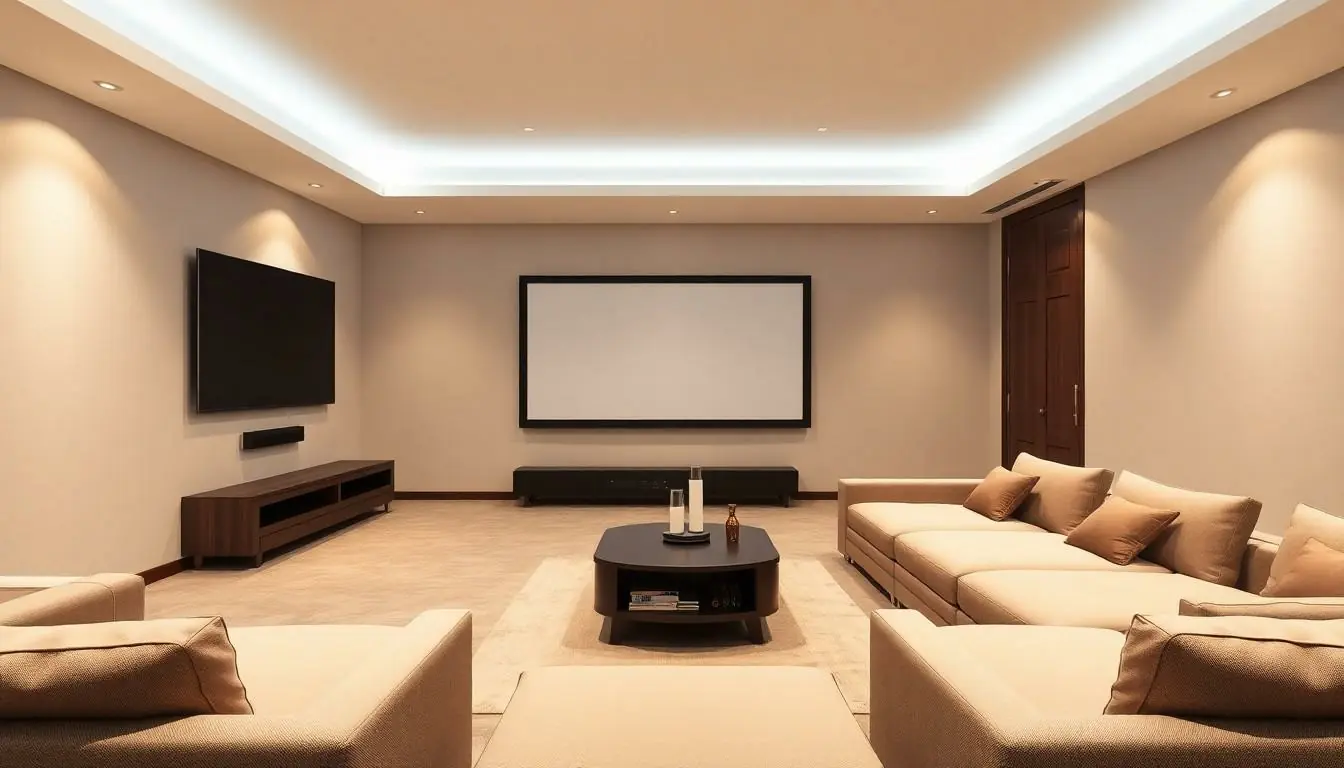
Home theater design presents various styles to suit diverse tastes and preferences. Each style creates a unique atmosphere for an immersive movie experience.
Modern Minimalist Design
Modern minimalist design emphasizes simplicity and functionality. Clean lines, neutral color palettes, and unobtrusive furniture contribute to a sleek ambiance. It often features wall-mounted screens and built-in shelving for a seamless look. Lighting plays a crucial role in this style; adjustable LED lights enhance flexibility during viewing. Choosing comfortable yet understated seating, like low-profile sectionals, keeps the focus on the viewing experience.
Classic Cozy Style
Classic cozy style revolves around comfort and warmth. Rich colors, plush fabrics, and soft lighting create an inviting atmosphere. This design often incorporates large sofas and oversized chairs adorned with throw pillows. A prominent display for classic movie posters adds character to the room. Layering rugs and curtains enhances the coziness, making the space feel more intimate. Adding side tables for snacks and drinks ensures convenience while enjoying films.
Lighting Considerations for Home Theaters
Lighting plays a vital role in creating an immersive home theater experience. It enhances mood and visibility, allowing viewers to fully engage with the content.
Ambient Lighting Techniques
Ambient lighting establishes the overall brightness of a home theater. Options include recessed ceiling fixtures, wall sconces, and LED strips to create a soft glow. These features reduce eye strain and enhance visual comfort. Dimming capabilities also offer flexibility during different viewing activities, from intense action scenes to serene moments. Additionally, smart lighting systems can adjust automatically based on the time of day or movie genre, promoting a customized atmosphere.
Task Lighting Solutions
Task lighting serves specific functions while maintaining the immersive experience. Overhead fixtures and floor lamps can illuminate seating areas, making it easier to see snacks and drinks. Select fixtures that blend seamlessly with the design while providing ample light for clarity. Some homeowners opt for directed lights, such as spotlights, illuminating posters or displays without disturbing the overall ambiance. Built-in shelves with integrated lighting further enhance design elements while offering practical solutions.
Acoustic Treatments and Soundproofing
Acoustic treatments and soundproofing significantly enhance the home theater experience. They improve sound quality, reduce noise pollution, and create an immersive environment for viewers.
Benefits of Acoustic Panels
Acoustic panels absorb sound waves and minimize echo. These panels improve clarity in dialogue and enhance the overall audio experience. Many homeowners opt for a variety of materials, such as fabric-wrapped foam or wood, to match their design aesthetics. Furthermore, suitable placement of panels along walls and ceilings can create a more balanced sound throughout the room. The installation of diffusers alongside the panels can scatter sound waves, preventing harsh reflections. Overall, acoustic panels are essential for achieving optimal acoustic performance.
Soundproofing Options
Numerous soundproofing options exist for home theaters. Mass-loaded vinyl offers an effective solution, as it adds density to walls, reducing sound transmission. Additionally, adding insulation within wall cavities can further dampen noise. Double drywall systems enhance soundproofing, creating an added barrier to block sound. Door seals and soundproof curtains also serve to limit noise intrusion from outside. By combining these techniques, homeowners can achieve a quieter environment, enhancing the viewing experience.
Budget-Friendly Home Theater Design Ideas
Creating a budget-friendly home theater involves smart choices and creativity. Both DIY solutions and second-hand equipment make this task achievable without overspending.
DIY Solutions
DIY solutions offer affordable methods to enhance home theater design. Building custom shelves allows for optimal organization of devices. Creating a projector screen using inexpensive materials, such as blackout fabric or plywood, provides a personal touch. Installing acoustic panels using fabric-wrapped foam or wood offers sound absorption and aesthetic appeal. Painting walls in dark hues helps minimize light reflection and enhance the viewing experience. Adding decorative elements like ambient LED strips can elevate the atmosphere without breaking the bank. Utilizing repurposed furniture pieces for seating or tables provides both functionality and a unique character. Transforming an existing space into a theater using affordable materials showcases creativity.
Second-Hand Equipment
Second-hand equipment presents an excellent opportunity for cost savings. Searching online marketplaces can uncover high-quality audio and visual gear at reduced prices. Choosing pre-owned projectors or speakers often results in significant savings compared to brand-new items. Many people sell their used equipment in good condition, allowing buyers to benefit from premium features without the hefty price tag. Checking local thrift stores or garage sales may yield unexpected finds, such as comfortable seating or decorative items. Inspecting items for functionality and wear ensures that purchases are worthwhile. Overall, embracing second-hand options can create an impressive home theater experience while adhering to a budget.
Creating a home theater is about crafting an experience that transports viewers into another world. By thoughtfully selecting equipment and designing the space, anyone can elevate their movie nights to new heights. Comfort plays a vital role in this journey with seating arrangements that invite relaxation and enjoyment.
Lighting and acoustics further enhance the atmosphere making every film feel cinematic. With a variety of styles to choose from there’s a perfect fit for every taste. Budget-friendly options allow creativity to shine while ensuring a stunning setup without breaking the bank. Ultimately a well-designed home theater transforms ordinary nights into extraordinary cinematic adventures.

